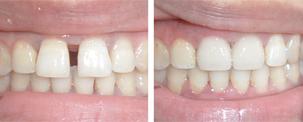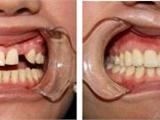What should I do if there is a gap between the front teeth?
The presence of gaps between the front teeth not only causes patients to have a "whistling" speech impediment but also makes it easier for food particles to get trapped, leading to bacterial growth and potentially causing periodontal diseases that harm oral health. Some superstitions even suggest it leads to financial loss. So, what can be done about gaps between the front teeth? What methods can be used to address this issue?
Gaps between the front teeth can be resolved through porcelain veneers.
Porcelain veneers involve creating a metal base from an alloy, then covering it with low-fusing porcelain powder that resembles natural teeth. This is then fused in a vacuum high-temperature porcelain furnace. The result combines the strength of metal with the aesthetics of full porcelain crowns. Its features include restoring the shape and function of the tooth, strong resistance to fractures, and a color and appearance that closely resemble natural teeth, with a smooth surface. Advantages: short treatment duration, quick results, and a realistic appearance. Disadvantages: it is a somewhat invasive treatment, and after some time, black lines may appear on the gum line. Clinical observations indicate that the lifespan of porcelain veneers is approximately eight years.
Gaps between the front teeth can also be addressed with cosmetic crowns.
Cosmetic crown teeth correction is a modern orthodontic technique popular in Europe, America, and South Korea, emphasizing the aesthetic effects of teeth. It applies professional techniques to the clinical crown portion of misaligned or deformed teeth, followed by restoration with a cosmetic crown. Advantages include no need for tooth extraction, no braces, painless procedure, short duration, strong and durable teeth, no black lines appearing on the gums after many years, and lifelong guaranteed aesthetic results. It represents the latest and most effective adult teeth correction technology.
Gaps between the front teeth can also be resolved through invisible aligner orthodontics without brackets.
Invisible aligner orthodontics involves using 3D stereoscopic computer technology to custom design a series of nearly undetectable transparent aligners to complete the entire orthodontic treatment. Traditional orthodontics uses small metal brackets bonded to the teeth with archwires tied to them to move the teeth into place. Invisible aligners, on the other hand, are transparent and less noticeable. The correction time usually takes around one and a half to two years.
For more information, you can consult online with a doctor or call the hotline: 4000-454-678.
Department website: http://www.101kq.com/




